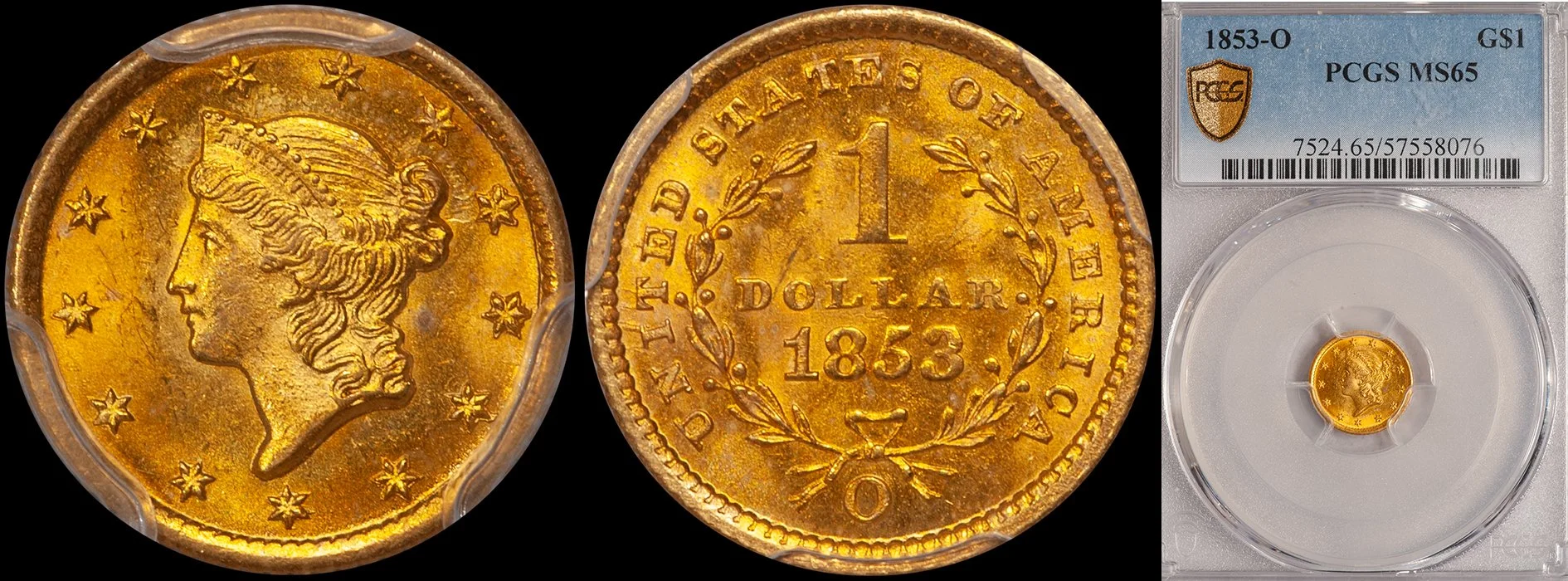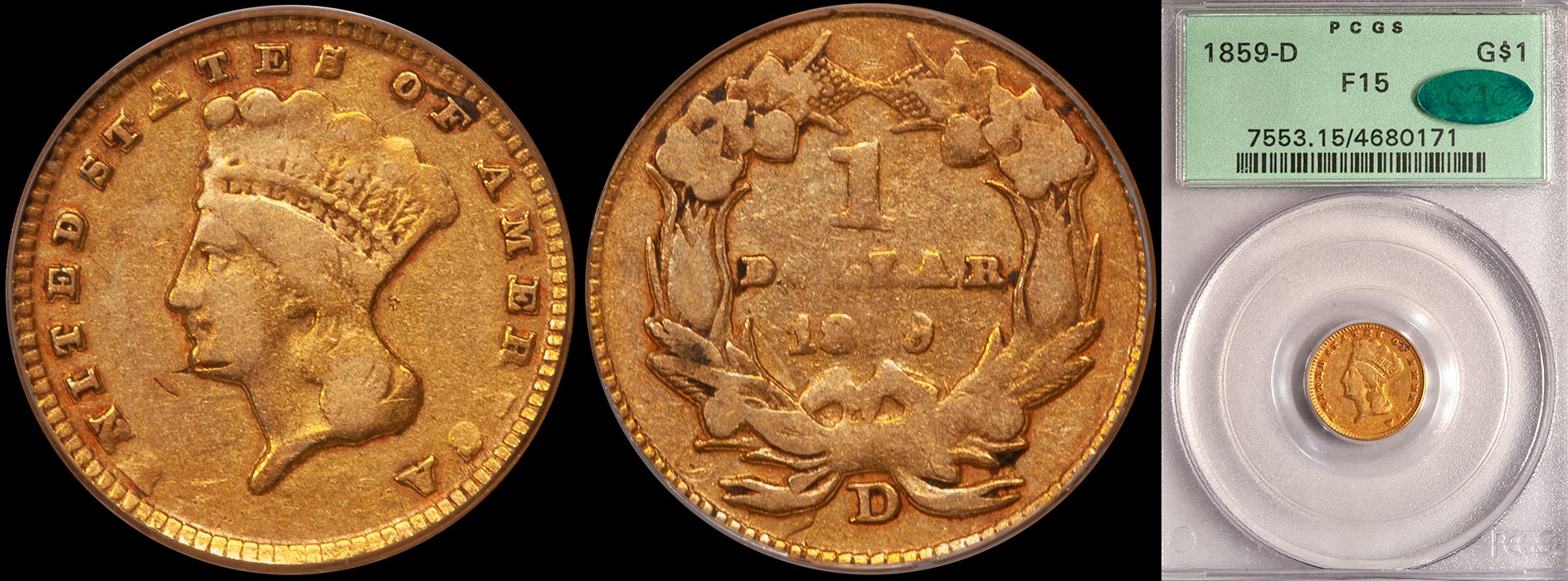What's Hot And What's Not: End of the Year Thoughts, 2014
/As much as I hate writing (and reading) "year in review" articles and blogs, 2014 saw so much activity—positive and negative—that I think some sort of end of the year treatment is an important feature for my regular readers. Instead of merely summarizing the year, I thought it might be more productive to look at what areas in the market are, as of the end of 2014, in demand or which are not. In other words, let’s go back to a popular DWN theme and let’s look at…"what’s hot and what’s not."
What's Hot?
1. Coins with "Bells and Whistles"
I define a "bells and whistles" coin as one which has added features that increase its desirability and value. This might be an old green label holder, a CAC gold sticker, a "plus" or "star" designation or, better yet, a combination of some or all of the above.
There is a "new breed" of collector who wants only coins in old green label PCGS holders, as these containers often symbolize a coin which is conservatively graded and whose surfaces are stable as they have been in the same plastic for two+ decades. This is also true with so-called NGC "no line fatty" holders.
While I think the importance of some of these bells and whistles may be overstated, I can see how they appeal to collectors. It can be extremely tricky to properly value coins like this. Say, for instance, a specific Liberty Head half eagle is worth $3,000 in AU50 and $8,000 in AU55. How does a PCGS AU50 old green label holder coin that is choice for the grade get valued? Is it worth $4,500? $5,500? $7,500? If the collector pays $7,500 for a coin which is theoretically worth less as per the grade of its current holder, will he be able to recoup the premium price he has paid when it comes time to sell?
2. Civil War Philadelphia and San Francisco Half Eagles and Eagles
Perhaps no area of the rare date gold market has seen greater price advances in the past few years than Civil War rarities from the Philadelphia and San Francisco mints. Many of these coins are exceptionally hard to locate in Extremely Fine and higher grades, and the increased demand has led to stiff competition for nice coins.
Let me give you an example. In their October 2014 Baltimore auction, Stack’s Bowers had an 1864 eagle in PCGS AU55. I wasn’t wild about the coin from a quality standpoint, but it was accurately graded and it is wildly rare in a PCGS 55 holder with none sold since 1999. Given the fact that an NGC AU55 had sold for what I thought was a high $28,200 in the Heritage 1/14 auction, I figured the PCGS coin would be buyable for $32,500-35,000. The coin wound up selling for close to $50,000.
I believe that there is enough collector support for rare Civil War gold coins that prices will continue to be strong in 2015 and beyond. You are talking coins with 40-50 known in many instances, and a strong case can be made that the new levels are what they should have been all along.
3. Coins with Multiple Levels of Demand
I invented the term MLD, but the concept has been around for generations. Coins which are popular to many groups of collectors are likely to have higher prices than coins which appeal to a small cadre of specialists (there are clearly exceptions to this rule; see die variety collecting).
Hot: a coin with “multiple levels of demand”
When I offer an interesting coin with multiple levels of demand on my website, I am often surprised at the intensity with which collectors respond. As an example, I recently offered the Bass 1838-D half eagle in PCGS AU58. This is a one-year type and a first-year-of-issue which has collector appeal far beyond the Dahlonega gold community. I received no less than seven orders for this coin within 24 hours of posting it and four of the responses were from collectors who I clearly never identified as southern gold specialists. I asked a few of them why this coin appealed to them and the answers I received were basically the same: it’s a really cool coin that appeals to me for a variety of reasons.
In 2015 and beyond, I see coins like this 1838-D half eagle continuing to have extremely high demand.
4. Choice Early Gold
The early gold market was strange in 2014. Prices didn’t really see all that much of an uptick. But one thing I noticed was an almost total lack of properly graded early gold, in all grade ranges and price points, in 2014. I typically am one of the larger buyers of early gold and I’d say that I handled 50% less by volume than I did in 2013.
When the Pogue sales begin in 2015, the market will see some exceptional high grade and/or extremely rare issues; most of which, you can be sure, will sell for record prices. This isn’t likely to have an impact on collector grade issues but it may open up the supply chain and collectors sell to raise funds for Pogue.
I think the demand for early gold, especially in the $7,500-20,000 range will be strong in 2015 and, I’d like to think, we will see some price increases as well.
What's Not?
1. Generic Gold
With the softness in gold prices, it’s no surprise that generic gold is one of the weakest areas in the market as 2014 comes to a close. What is surprising is just how weak these coins are.
It’s not just junky generic gold like MS61 Liberty Head half eagles which are weak right now. “Real” coins like MS66 Liberty Head quarter eagles (currently worth as little $1,300 for low end pieces and not worth much more than $1,600 for nice PCGS coins) and MS65 Liberty Head eagles (worth between $2,300 and $2,800, depending on quality) are at the lowest levels I can remember in at least a decade. Even scarcer types like MS65 Indian Head half eagles are not immune from prices spiraling downwards. I’ve seen marginal quality MS65’s trade for as little as $7,500; a far cry from the $12,500-15,000 levels that this series commanded at one time.
I could go on and on about why this has happened but I won’t here. Suffice to say, it boils down to an extreme lack of demand for most generic gold. CAC approved generics in MS65 and MS66 are another story, but even the levels and the demand for these coins is at their lowest in some time.
If you are a contrarian, you might want to look at high-quality (MS65 and MS66) generic gold in 2015. I, for one, see prices dropping even further before enough people begin to make purchases driven by seemingly it can’t get any lower price levels.
2. Off-Quality Coins
Coin buyers have become considerably more quality oriented in the last few years and in 2014, a coin which is perceived as being “off quality” sells at a sharp discount. What exactly is “off quality?” This doesn’t necessarily mean a coin which is a no grade due to damage, cleaning, or abuse. It might mean a coin which is too bright or which has unattractive dark toning. Whatever the reason, if the perception is that a better example can be found without much effort, even a bargain price is not a motivating factor.
There are exceptions to this. Some truly rare coins (an 1864-S half eagle as an example) are either too expensive or too rare for most collectors and an off quality example might represent the only purchasing opportunity available. But these exceptions are far and few between and I anticipate that coins with baggage will slide further and further into the No Buy Zone in 2015.
3. Common Date Type One Double Eagles
For close to a decade, Type One double eagles have been at the forefront of the rare date gold market. Prices have doubled, tripled, and even, in a few cases, quadrupled as many new collectors entered this market. But as 2014 comes to end, I see some price resistance in this market.
I don’t mean to imply that Type Ones are not “hot.” Price levels for many scarcer Philadelphia and San Francisco issues are still at near record highs, and when a rare New Orleans issue becomes available, levels are still at record or near-record highs.
But the days of continual upticks in prices for coins like 1850 double eagles in AU53 or 1861 double eagles in AU55 are likely over, with the possible exception of very PQ CAC approved coins.
Let’s look at the 1850. As of today, a collector will have to pay $4,500-5,500 for an AU53; an increase of around $1,000-1,500 over levels in 2010. It’s not that the 1850 is necessarily a bad deal at five grand; it’s just that there are hundreds of other coins a collector can buy for this amount that don’t have the hefty population figures that this date has (295 in this grade between NGC and PCGS).
What are some of the "hot" and "not hot" coins for 2015 in your opinion? Your comments are, as always, encouraged, please leave them below.
Do you buy rare gold coins?
Do you have coins to sell?
Would you like to have the world’s leading expert help you assemble a set of coins?
Contact me, Doug Winter, directly at (214) 675-9897 or by email at dwn@ont.com.
















